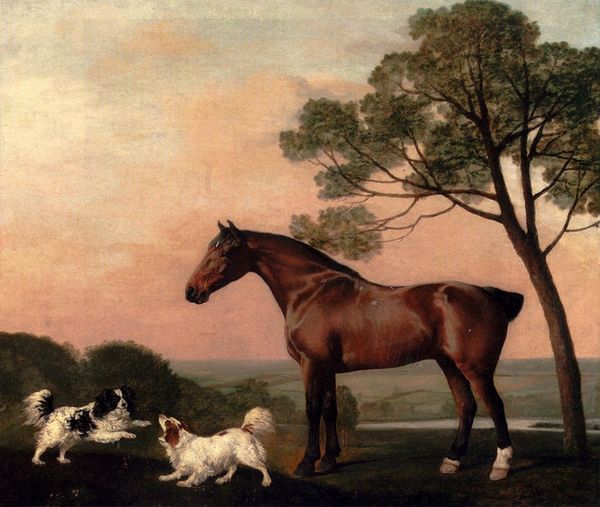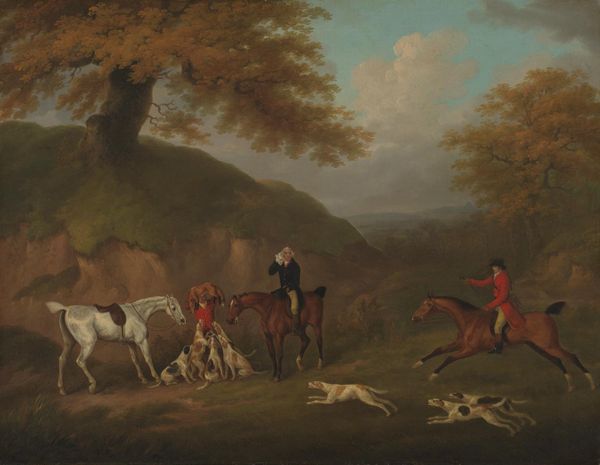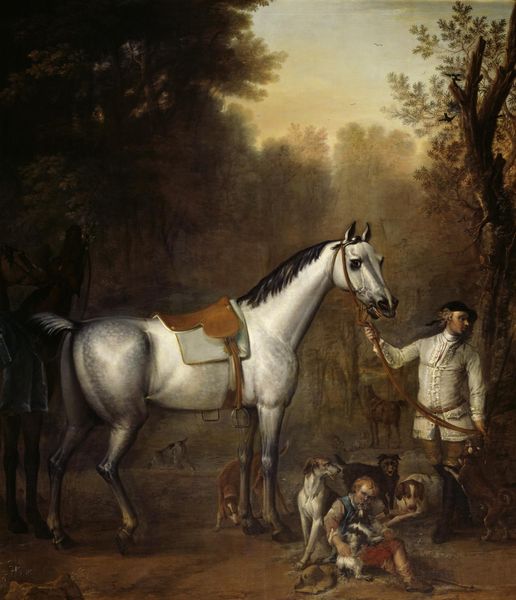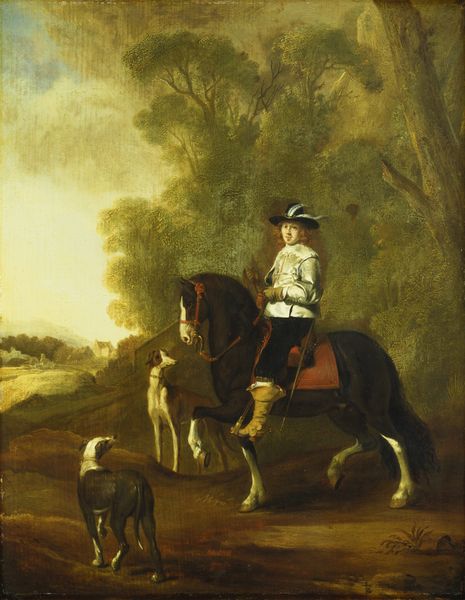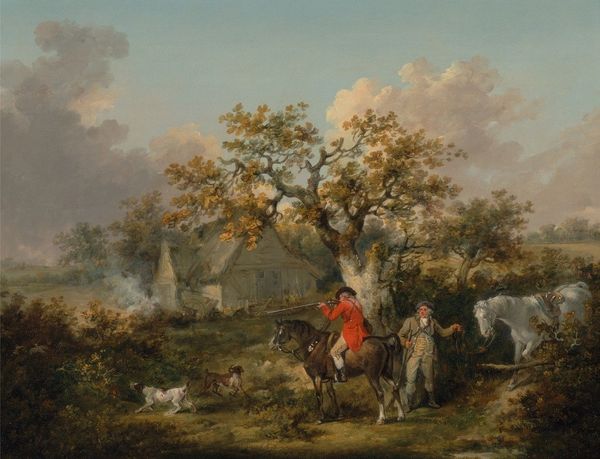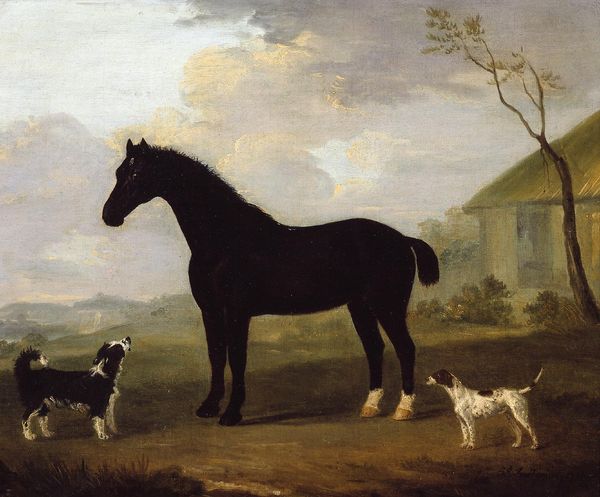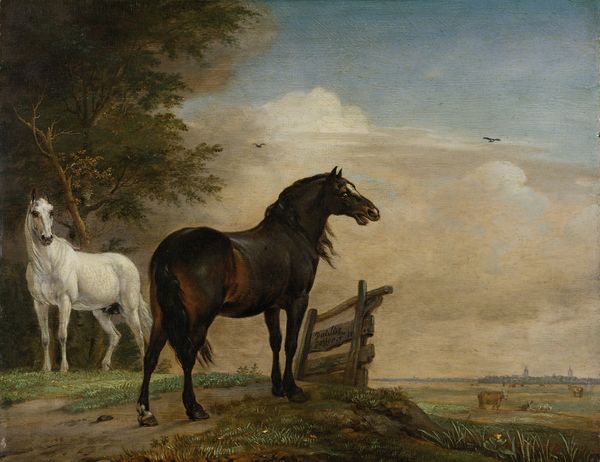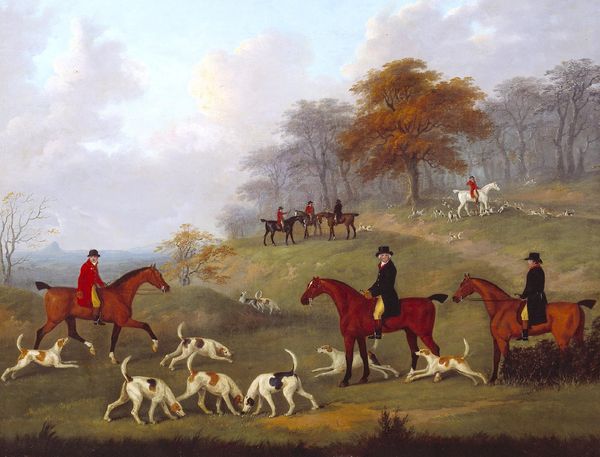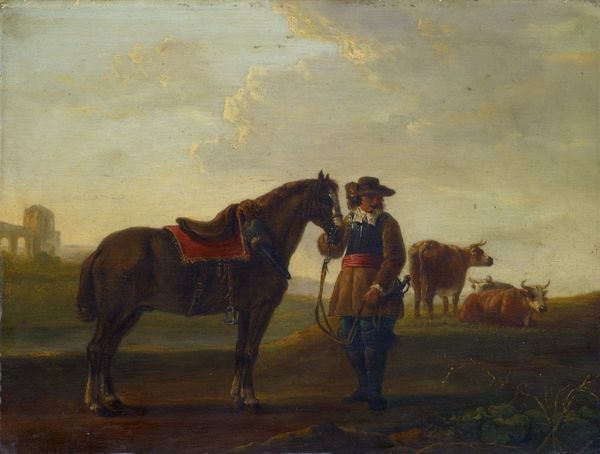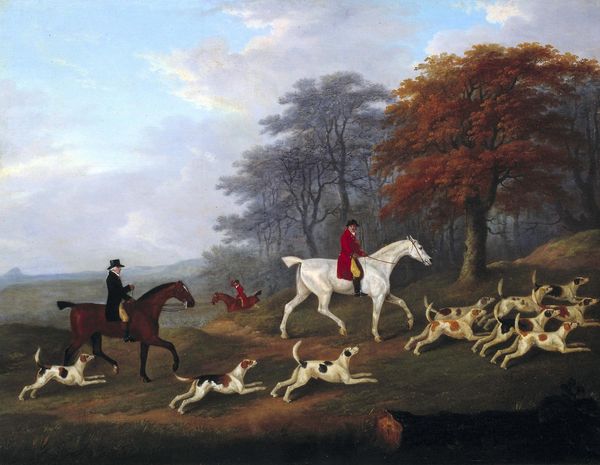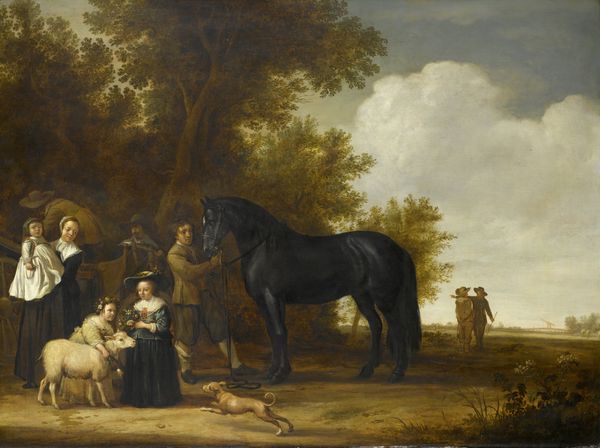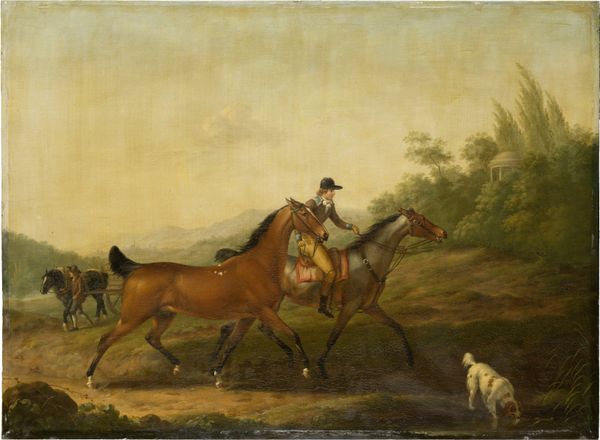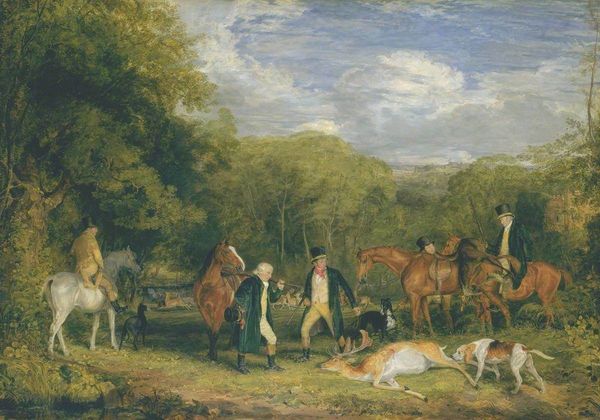
Studies for or after ‘The third Duke of Richmond with the Charleton Hunt’ c. late 1750s
0:00
0:00
painting, oil-paint
#
portrait
#
baroque
#
animal
#
painting
#
oil-paint
#
landscape
#
figuration
#
oil painting
#
watercolour illustration
#
genre-painting
Copyright: Public Domain: Artvee
Editor: This is "Studies for or after 'The third Duke of Richmond with the Charleton Hunt'" by George Stubbs, dating from the late 1750s. It's an oil painting and seems quite idyllic, depicting a hunter, his horse and two dogs. What draws your eye in this piece? Curator: I find the composition interesting in relation to Stubbs’s career. Look closely at the rendering of the animals. They reflect his dedication to anatomical study, a dedication that shaped his practice. We often view "high art" as separate from scientific pursuits, but here, Stubbs blurs those boundaries through a focus on material accuracy. Do you see that? Editor: Yes, I see it. He's clearly prioritizing scientific observation. It makes me think about the patronage he relied upon. Curator: Precisely! The Duke of Richmond, the ostensible subject, commissioned this, which points to the consumption of art within the British aristocracy. This wasn't simply decorative; it served to reinforce social standing and celebrate activities linked to their power. Consider the labour invested. Stubbs' meticulous painting demonstrates not only artistic skill but also time, a commodity accessible only to the wealthy. Editor: So the materiality of the paint and the time invested are crucial to understanding its social context? Curator: Absolutely. Think about where Stubbs sourced his materials, too. The pigments themselves represent global trade networks and colonial exploitation. The "innocent" portrayal of leisure hides a more complex reality of resource extraction and unequal labour practices. Editor: It’s incredible to think about how much this seemingly simple painting can tell us about the 18th-century world. Curator: Indeed. By examining the materials and methods of production, we uncover the socio-economic relationships embedded within the art object. Editor: This perspective gives me a new appreciation for how class, labour and materials create our visual culture! Thanks for sharing!
Comments
No comments
Be the first to comment and join the conversation on the ultimate creative platform.
